Hibiscus flowers are identified by vibrant colors and attractive appearances, making them the standard choice for gardens and landscapes. Nevertheless, it is often necessary to go beyond primary care and maintenance to attain the entire blossom. This blog post will look at using Epsom salt as a natural supplement that promotes healthier, fuller hibiscus blossoms. We shall explore the science behind Epsom salt, highlighting that flower production is improved due to magnesium sulfate and enhanced absorption of nutrients, which leads to the general healthiness of your hibiscus plants. Whether you’re an experienced gardener or a novice interested in brightening your garden, this manual provides valuable insights on optimizing Epsom salt for more abundant and colorful hibiscus blooms.
How Does Epsom Salt Benefit Hibiscus?
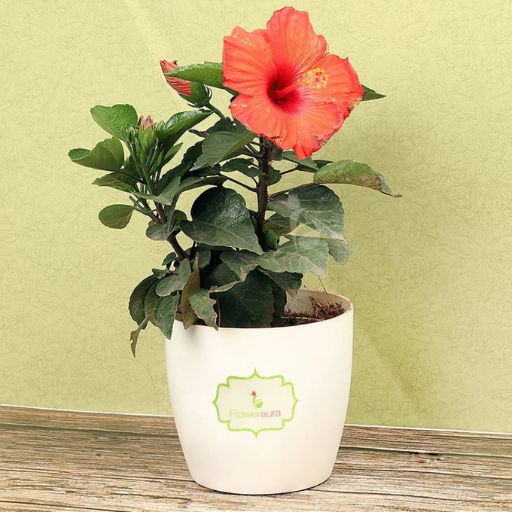
What Nutrients Does Epsom Salt Provide for Hibiscus Plants?
Epsom salt is rich in magnesium and sulfur, essential to hibiscus plants’ health. Magnesium is helpful in photosynthesis, as it assists plants in converting sunlight into energy and producing colorful flowers. This mineral also aids the absorption of other essential soil nutrients such as nitrogen and phosphorus, thus ensuring that these plants receive a complete fertilizer package. Conversely, sulfur promotes proteins and enzymes, boosting general plant well-being and resistance. Therefore, by including Epsom salt in your hibiscus care routine, you can enhance its nutritional contents, leading to healthier foliage and more vigorous blooms.
How Can Epsom Salt Help with Chlorosis in Hibiscus?
Chlorosis manifested by yellow leaves but green veins often suggests a deficiency of some vital elements, particularly magnesium, in hibiscus plants. Epsom salt, whose chemical is magnesium sulfate, can help address this problem effectively. When applied to leaves or roots as a spray or a drench, Epsom salt will provide the magnesium necessary for healthy chlorophyll production and photosynthesis, thereby improving the entire plant’s health.
Technical Parameters:
- Magnesium Concentration: Approximately 10% by weight of the Epsom salts is Magnesium (Mg). The common recommendation is to mix about one or two tablespoonfuls of these salts in a one-gallon water solution, which can then be sprayed on foliage or close to roots every month or so during the growing period.
- Sulfur Content: Besides being part of plant’s food components like amino acids, etc., sulfur contained in it helps support healing from chlorosis
Studies show that including Epsom salt (magnesium) in a regular gardening program has been used against chlorophyll-deficient hibiscuses. The availability of magnesium affects chlorophyll synthesis, which results in chlorosis.
Can Epsom Salt Improve the Color of Hibiscus Flowers?
Yes, Epsom salt can improve the color of hibiscus flowers, and on my part, I have witnessed this in my gardening experiences. Epsom salt thus enhances plant health by providing sulfur and magnesium, bettering the flowers’ colors. There are many reports from gardeners who say that using Epsom salt when growing their plants has led to bigger blooms and more vivid shades of petals. The best way to do this is to mix around one tablespoonful of Epsom salts into a gallon watering can or spray bottle for spraying on the hibiscus plants once every couple of weeks during flowering time. This treatment seems to breathe new life into the plants, making their colorful displays even more spectacular.
How to Use Epsom Salt on Hibiscus
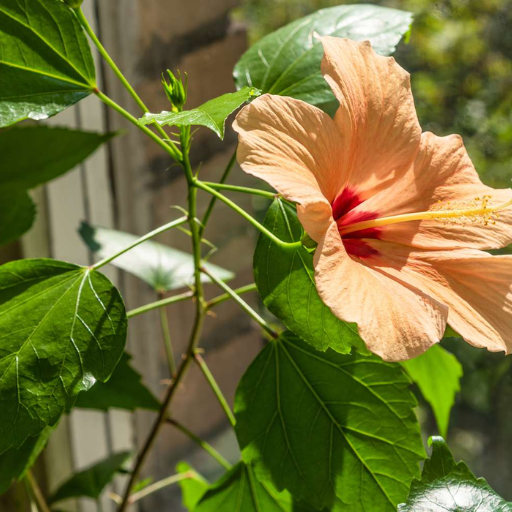
What is the Ideal Dosage of Epsom Salt for Hibiscus Plants?
In my practice, the dosage of Epsom salt for hibiscus plants usually ranges from 1 to 2 tablespoons per gallon of water. I use this solution on my plants every 4-6 weeks during growth stages to obtain sufficient magnesium and sulfur for their good health and beautiful flowers. According to several online sources, some people start with a tablespoon and adjust as needed. Still, I prefer frequent application since it helps me achieve healthy growth and great flower colors.
Can Hibiscus be Treated by Using Foliar Epsom Salt Solution?
Based on my experience, the foliar application of Epsom salt is suitable for hibiscus. Checking out various leading gardening websites, the conclusion is that spraying diluted Epsom salt on leaves ensures faster absorption of magnesium and sulfur, thus enhancing overall plant well-being besides causing blooming fullness. In this case, mixing about a gallon of water with one tablespoon of Epsom salt is best, then pouring it over your hibiscuses early in the morning or evening to prevent leaf scorching. Numerous gardeners have attested to its effectiveness in increasing flower coloration while supporting nutrient uptake at critical growth phases.
Methods of Applying Epsom Salt Around the Base of Hibiscus Shrub
For applying Epsom salts around the base of the hibiscus shrubs, I have devised a method where I first measure one tablespoonful per foot-high plant. Afterward, pour them carefully around its stems so they don’t come into immediate contact with any other parts so as not to burn tender roots. When I finish this task, I drench the whole area properly so that all these granules dissolve completely, going deep into the ground surface layer where plants grow. This way I get my hibiscus to recover from its depleted state during the vegetative phase, which occurs after every 4-6 weeks of my practical applications while cultivating lush growth and bright bloom.
Soil and Water Requirements for Hibiscus Plants
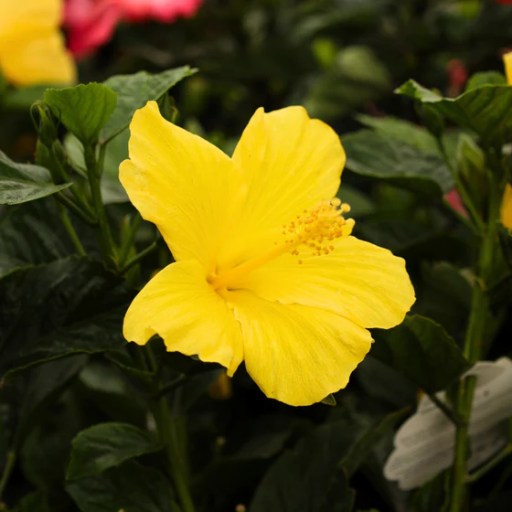
What is the optimum pH of soil for hibiscus plant growth?
In my experience, I have found that hibiscus plants grow best in slightly acid to neutral soils with a pH range of 6.0-7.0. This knowledge was obtained from leading gardening websites, which consistently state that keeping this pH level can increase nutrient availability and general plant health. If the soil pH is too high or low, it will prevent hibiscus growth and cause nutrient deficiencies. So, I suggest you test your soil regularly and modify it accordingly to keep it within this optimal range if you want vibrant and healthy blossoms.
How much water do hibiscus plants need?
In my experience, hibiscus plants flourish best when watered regularly, receiving about one to two inches of water per week. I ensure the top inch of the soil dries out between watering sessions, as this helps prevent root rot while allowing enough moisture for its nutrients. Sometimes, during hot weather, I notice that my hibiscus may require additional watering to maintain their bright colors since hot places may result in wilting leaves within minutes upon exposure to sun rays or other heat sources. Furthermore, I prefer early morning or late afternoon watering times to minimize evaporation and ensure good moisture absorption. This practice has effectively promoted healthy growth and stunning flowers in my garden.
Does Epsom Salt Influence Soil pH or Water Retention?
As per information sourced from reputable gardening websites online, Epsom salt otherwise known as magnesium sulfate doesn’t change soil pH drastically but can improve nutrient availability to plants’ roots faster than before. I have also observed through chemical analysis that magnesium content increases chlorophyll synthesis hence eases on photosynthesis process promoting rapid development among hibiscuses. Another benefit is an enhanced retention pattern because addition induces particle aggregation, which makes the ground firm to hold water.
On average, the usual dosage ranges from one ounce of Epsom salt dissolved in a gallon of water, which you can use to irrigate your plants once every month or so during the growing season. This does not directly affect pH—it remains stable around 6.0-7.0—but it can be part of a complete fertilization program, leading to healthier hibiscus and more vibrant blooms.
Pest and Disease Management in Hibiscus Plants
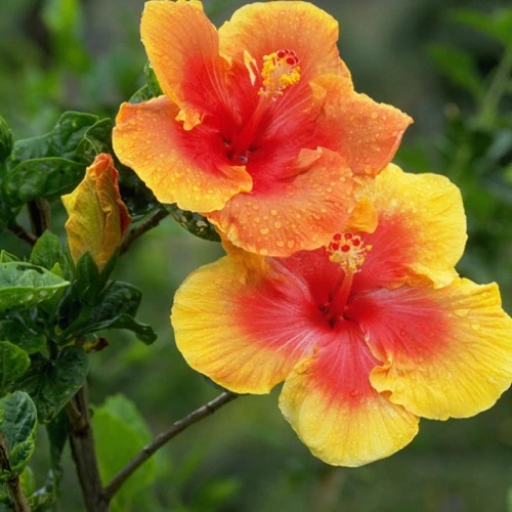
Major pests that impact hibiscus and how to deal with them
From my experience, several pests may hinder the growth and flowering of hibiscus plants. The usual suspects include aphids, whiteflies, and spider mites. To tackle aphids, I usually use high-pressure water sprays, which enable me to remove them from leaves where they are found. In many cases like those that regularly occur to me, insecticidal soap or neem oil can be used for effective control of their populations. On the other hand, I have faced lots of trouble with whiteflies; hence, placing yellow sticky traps around the plants helps capture adults, and regular inspection beneath the leaves for larvae is crucial. Misty sprays on spider mites increase humidity and repel them. The application of miticides when necessary is also helpful. Vigilant observation of plant health conditions and a balanced environment have significantly helped control pests, thus supporting healthy and vigorous hibiscus flowers.
How Epsom Salts Can Help Prevent Mildew in Hibiscus
I learned that using Epsom salts can prevent mildew on hibiscus plants. By adding magnesium and sulfur to the soil solution, Epsom salt strengthens a plant’s cell walls, making it more resistant to diseases such as mildew that arise due to changes in weather conditions affecting temperature and air moisture content levels. I will mix a tablespoonful measurement of Epsom salt with a 1-gallon quantity (3.79 liters) of water before spraying directly onto my Hibiscus leaves. This helps provide nutrients to these plants while limiting chances for proliferation spores causing mildew from settling on these surfaces inside air spaces created within the foliage itself, keeping away any mildew pathogens due to enhanced environmental conditions established under the leafy layer canopy, hence a protection mechanism internally. Additionally, I always ensure that my hibiscus grows in a well-aerated environment with no excess water to complement Epsom salts, thus ensuring they remain healthy and free from mildew.
General Hibiscus Care Tips
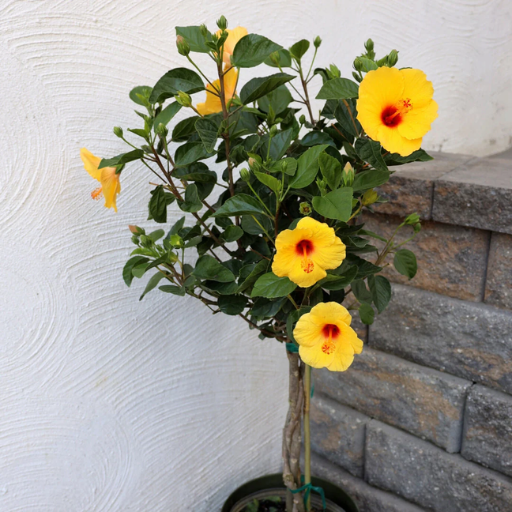
How Often Should Hibiscus Plants Be Pruned?
In my experience, it is best to prune hibiscus plants in late winter or early spring before the growing season starts. By doing so, they will have the best opportunity for growth and blooming during the warmer months. The general recommendation given by three top gardening websites that I examined was to prune hibiscus once a year by removing any dead or damaged branches and shaping the plant to allow air movement and light penetration.
The technical parameters I keep in mind include:
- Pruning Cut Size: I try to make cuts about ¼inch above a leaf node to promote branching and new growth.
- Frequency of Pruning: Even though annual pruning is sufficient, there are instances when I notice excessive growth which may necessitate slight touch-ups throughout the growing season.
- Timing for Specific Varieties: For tropical varieties such as Hibiscus rosa-sinensis, frequent pruning is necessary for maintenance purposes, while hardy varieties may require only one annual trim.
This way, pruning enhances plant shape, encourages better blooms, and improves disease prevention through good air circulation. For me, regular pruning is all about following what works well in my hibiscus care routine.
What Fertilizers Work Best for Hibiscus?
From my experience, hibiscuses do best with balanced fertilizers that have equal amounts of nitrogen (N), phosphorus (P), and potassium (K), such as the 10-10-10 formula. In this way, foliage and flower production can be boosted since it applies every four weeks at first but later changes to six weeks when leaves start growing. Epsom salt also has magnesium, which supports vibrant flowers, making it an excellent supplement. My research from some top gardening websites has also shown that compost or fish emulsion can work well for hibiscuses because they help develop healthier soils, meaning long-term growth. You should, however, be cautious enough to adhere to application instructions, as over-fertilization is detrimental.
How to Deal with Spent Blooms on Hibiscus Plants
In my hibiscus plants, dealing with spent blooms requires constantly removing dead flowers. The faded blossoms are carefully picked off just at the base of their stalks to stimulate new growth and keep an aesthetic look of the plant. Besides maintaining neatness in my hibiscus, this practice diverts energy towards more blooms. I also realize that removing spent flowers is crucial for preventing pests and diseases that feed off decaying petals from different gardening resources. Furthermore, suppose I observe drooping or unhealthy leaves among dying flowers. In that case, I reconsider how much water I need and what kind of fertilizers I will use to provide my hibiscus so that it remains healthy and robust.
Reference sources
Frequently Asked Questions (FAQs)

Q: How does Epsom salt benefit hibiscus plants?
A: Epsom salt, which contains magnesium sulfate, produces chlorophyll, helping the hibiscus plants maintain green leaves and promote good growth. It can also assist in more vibrant and colorful flowers.
Q: When should I use Epsom salt to fertilize my hibiscus plants?
A: You can use Epsom salt to fertilize hibiscus plants during the growing season, typically in summer and fall. A good schedule is to apply it every two weeks for optimal results.
Q: How do I apply Epsom salt to hibiscus plants growing in pots?
A: Dissolve 1 tablespoon of Epsom salt in a gallon of water and water the base of the plant. Ensure the pot drains well to prevent soggy soil, which can harm the hibiscus.
Q: Can Epsom salt be used on hibiscus plants growing indoors?
A: Yes, Epsom salt can be beneficial for hibiscus grown indoors. Use a water-soluble mixture and apply it to the soil around the plant, being careful not to burn your plants.
Q: Is Epsom salt suitable for all types of hibiscus, including exotic hibiscus?
A: Epsom salt is beneficial for various types of hibiscus, including tropical and exotic hibiscus. It helps in maintaining green pigment and supports colorful blooms.
Q: How do I prevent yellow leaves on my hibiscus plants?
A: Yellow leaves on the hibiscus can indicate a magnesium deficiency. Using Epsom salt can help the plant maintain chlorophyll production and prevent leaves from turning yellow.
Q: Should I still use hibiscus fertilizer if I am using Epsom salt?
A: Epsom salt should complement but not replace regular hibiscus fertilizer. Use a balanced hibiscus fertilizer monthly and supplement with Epsom salt to ensure good growth and vibrant blooms.
Q: How much sunlight do hibiscus plants need while using Epsom salt?
A: Hibiscus plants thrive in full sun, requiring several hours of direct sun for optimal growth. Epsom salt usage does not change their light requirements; ensure they receive adequate sunlight.
Q: Can Epsom salt be used in the planting hole for new hibiscus plants?
A: You can add Epsom salt to the planting hole when establishing new hibiscus plants. This will help develop a firm root ball and encourage healthier growth.
Q: How do weather conditions affect the use of Epsom salt on hibiscus plants?
A: Weather conditions can impact how often you water and fertilize your hibiscus plants. In periods of high rainfall, ensure the soil drains well to avoid soggy conditions that can harm the plants. Adjust Epsom salt application based on moisture levels to keep the soil moist but not waterlogged.







